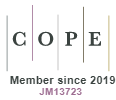A Novel approach for optimization in Mathematical calculations using Vedic Mathematics Techniques
DOI:
https://doi.org/10.15415/mjis.2012.11002Keywords:
Vedic Mathematics, Sutras, SamuccayaAbstract
Vedic Mathematics is the name given to the ancient system of mathematics, or to be precise, a unique technique of calculations based on simple rules and principles with which any mathematical problem can be solved – be it arithmetic, algebra, geometry or trigonometry. The system is based on 16 Vedic sutras or aphorisms, which are actually word formulae describing natural ways of solving a whole range of mathematical problems. In this paper, we will be taking a few Vedic sutras. Akadhiken Purven (By one more than the one before), Nikhilam Navtashcharam Dashat (All from 9 and the last from 10) are two of them. NASA has adopted it fully in the realms of advanced robotics. Calculations that can be solved as quick as lightning are a great tool to adopt, but you wouldn’t want to teach it worldwide in the fear that you may churn out a generation of child geniuses that may threaten the intellectual status quo.
The gift that the Hindus gave to the world, thousands of years ago, and that which is currently responsible for global silicon chip technology, was none other than the invention of zero and the use of the decimal point. We call our common numbers “Arabic Numerals” but really they extend back to the Hindu concept of creation and were known as “Bindu” or Unity. All Vedic Maths is based on the understanding of Unity Consciousness which means they utilize processes or Number Bases that correspond to 0, 10, 100, 1000, 10000, etc all of which add to 1. In light of the fact that the Vedas, literally “the illimitable storehouse of All Knowledge” came under 4 headings or categories like the Rig Veda, the Yajur Veda, the Sama Veda, and the Atharva Veda. Thus a Vedic Mathematician was also an astronomer, healer, and poet. It was a total system if you are out in the field and you need to tile a square floor that is, say 108 units square. How do you do it with mental ease? I think only of the excess “8”, saying how much is 108 more than my Base of 100. It is “8”. So we will merely add this “8” to the number in question “108” and tag on the squaring of this excess: 108 Squared = 108 + 8 / 8×8 = 116 / 64 = 11,664.
Vedic mathematical methods are derived from ancient systems of computations, Compared to conventional mathematical methods, these are computationally faster and easier to perform. An application of Vedic mathematics can be effectively increased if it can make available to the beginners in various fields of study.
Downloads
References
Jagadguru Swami Sri Bharati Krisna Tirthaji Maharaja, Vedic Mathematics: Sixteen Simple Mathematical Formulae from the Veda. Delhi (1965).
Williams, K., Discover Vedic Mathematics. Skelmersdale: Inspiration Books (1984).
VedicMaths.Org (2004), http://www.vedicmaths.org
The Implementation of Vedic Algorithms in Digital Signal Processing by Purushottam D. Chidgupkar and Mangesh T. Karad, MIT Women Engineering College, Maharashtra Academy of Engineering and Educational Research, Pune, India.
Downloads
Published
How to Cite
Issue
Section
License
Articles in Mathematical Journal of Interdisciplinary Sciences (Math. J. Interdiscip. Sci.) by Chitkara University Publications are Open Access articles that are published with licensed under a Creative Commons Attribution- CC-BY 4.0 International License. Based on a work at https://mjis.chitkara.edu.in. This license permits one to use, remix, tweak and reproduction in any medium, even commercially provided one give credit for the original creation.
View Legal Code of the above mentioned license, https://creativecommons.org/licenses/by/4.0/legalcode
View Licence Deed here https://creativecommons.org/licenses/by/4.0/
 |
Mathematical Journal of Interdisciplinary Sciences by Chitkara University Publications is licensed under a Creative Commons Attribution 4.0 International License. Based on a work at https://mjis.chitkara.edu.in |









